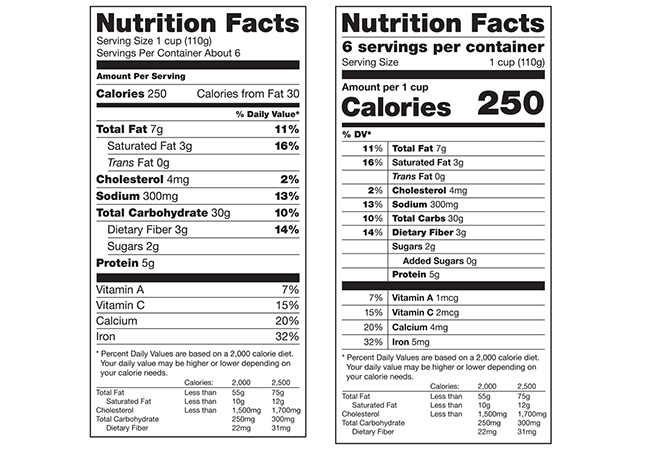Chances are, you’re familiar with what a nutrition label looks like now. Well, everything you know is about to change.
Maybe not quite everything. But the Food and Drug Administration announced new guidelines for food manufacturers earlier this year — so changes are on the way.
These changes are a good thing for consumers. They’ll make it easier for you to make informed food choices for yourself and your family.
Here’s a look at five important changes headed to a nutrition label near you.
- The design is changing. While the size and look of the label will remain the same overall, certain aspects of the label will be emphasized through larger font size or bold font.
The number of servings per container will be more prominent, while the serving size and calories per serving will be larger and in a bold font.
These changes mean it will be easier to quickly scan a label for these important bits of information.
- Added sugar will make an appearance. Sugar has been in the news a lot these past few years. While sugar is found naturally in fruits and dairy products, much of the sugar in our diets comes from added sugars.
Previously, it’s been difficult to determine what was natural sugar and what was added sugar in a packaged food item. With the addition of added sugars to the nutrition label, it will be easier to see.
This is important: Consider that the average American eats about 20 teaspoons of added sugar per day. The recommendation is no more than 6 teaspoons.
- The list of nutrients is changing. Because of changes in nutrition guidelines and scientific evidence, the nutrients required to be listed are changing. Previously, vitamins A, C, calcium and iron were required.
With the new label, vitamins A and C will no longer be required; vitamin D and potassium will take their place.
The new labels will also contain the actual amount of these nutrients in the food, in addition to the percent Daily Value of each.
- Serving size is changing. The law requires that serving size reflect what people are actually eating. In reality, that hadn’t been the case in years. The amount included in the serving size will be updated in most cases to reflect actual consumption.
For example, the serving size for ice cream has been 1/2 cup since 1993. But how many people actually limit themselves to 1/2 cup? The serving size is being updated to 2/3 cup.
- Package size (servings per container) is also changing. This change is a bit more complex — it’s dependent on how many servings are inside the package.
If the package contains between one and two servings, like a 15-ounce can of soup, the label will indicate the package contains one serving. This more accurately reflects what people actually eat in a sitting.
If the package contains more than one serving but could be consumed in one sitting, the label will have two columns to indicate a single serving’s nutrition information and the entire package’s nutrition information.
Looking for more guidance on your family’s nutrition? Erlanger Health System offers a variety of resources about nutrition and maintaining a healthy weight, including a Weight Loss Program and the C-HEAL program for families.







